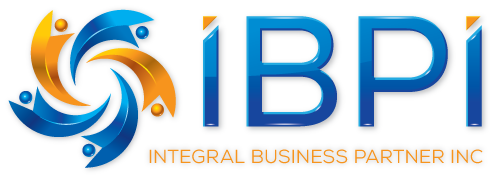How Recruiters Can Go Beyond Surface-Level Conversations
Introduction: The Power of Asking Better Questions
Recruiters often focus on selling the job, evaluating skills, and moving candidates through the process. But the best recruiters know that the real magic happens when they ask the right questions.
✅ Strong questions reveal hidden motivations.
✅ Layered questioning builds trust and credibility.
✅ Great recruiters don’t just listen to answers—they dig deeper.
Candidates and clients rarely say exactly what they mean upfront. It’s your job to peel back the layers—like an onion—to uncover their true needs, concerns, and motivations.
This post will explore:
🔹 How deeper questions lead to better hires.
🔹 Techniques for peeling back the layers of a conversation.
🔹 Examples of powerful questions to ask candidates and clients.
🔹 How AI tools can help analyze responses (without replacing intuition).
Why Asking Better Questions Leads to Better Hires
Most recruiters ask generic, transactional questions, like:
- “Are you interested in this role?”
- “What’s your expected salary?”
- “What experience do you have with [X skill]?”
But these questions only scratch the surface and don’t uncover what truly matters.
Example: The Candidate Who Seems Interested but Won’t Commit
🚨 What they say: “I’d consider making a move for the right opportunity.”
🔍 What they really mean: “I have doubts, but I don’t want to say no outright.”
✔ Better follow-up question:
“What does ‘the right opportunity’ look like for you? Walk me through what would make you excited to make a move.”
💡 Why this works: It forces the candidate to articulate their motivations rather than giving a vague answer.
Techniques for Peeling Back the Layers of a Conversation
Great recruiters don’t just accept the first answer—they go deeper. Here’s how:
1. The 3 Levels of Questioning
🔹 Level 1 – Surface-Level Questions (Basic facts)
“What kind of role are you looking for?”
🔹 Level 2 – Motivational Questions (Uncover drivers)
“Why is now the right time for a career change?”
🔹 Level 3 – Insightful Questions (Reveal hidden barriers)
“If you got two competing offers, how would you decide which one to take?”
Best recruiters consistently move beyond Level 1 to uncover real insights.
2. The “Tell Me More” Technique
Most people don’t fully express themselves on the first try. This technique encourages deeper responses by prompting the person to expand on their thoughts.
🔹 Example:
🚨 Candidate: “I’m looking for better career growth.”
🔹 Recruiter: “Tell me more. What does ‘career growth’ mean to you?”
🚨 Candidate: “I want to work on bigger projects and lead a team.”
🔹 Recruiter: “What kind of leadership opportunities excite you the most?”
💡 Why this works: Instead of assuming what “career growth” means, you let the candidate define it in their own words.
3. The “5 Whys” Method
Originally from Toyota’s problem-solving framework, this method helps identify the root cause of a candidate’s decision-making.
✔ Example:
🔹 Recruiter: “What’s most important to you in your next role?”
🚨 Candidate: “I want better work-life balance.”
🔹 Recruiter: “Why is that important?”
🚨 Candidate: “I feel like I’m always working and don’t have time for my family.”
🔹 Recruiter: “Why do you feel that way?”
🚨 Candidate: “My current job expects me to be online late at night.”
🔹 Recruiter: “Why do they expect that?”
🚨 Candidate: “My manager is in a different time zone and schedules late meetings.”
🔹 Recruiter: “Why do you want to leave that situation?”
🚨 Candidate: “Because I want a company that values work-life balance and sets clear boundaries.”
💡 What we learned: The candidate isn’t just looking for work-life balance—they’re looking for a culture that respects boundaries.
This is the insight that makes the difference between an okay hire and a perfect fit.
Real-World Examples of Powerful Questions
Here are some go-to questions top recruiters use:
For Candidates:
✔ “What’s missing from your current job that you hope to find in your next role?”
✔ “What would make this opportunity a ‘hell yes’ for you?”
✔ “Beyond salary, what factors matter most in your job search?”
✔ “What’s one thing a past employer did that made you feel truly valued?”
For Hiring Managers:
✔ “Tell me about a past hire who was a great fit. What made them successful?”
✔ “What’s the biggest challenge this new hire will need to solve?”
✔ “If you had to choose between experience and culture fit, which would you prioritize?”
✔ “What concerns do you have about making the wrong hire?”
Each of these questions encourages deeper responses and more meaningful conversations.
How AI Can Support (But Not Replace) Better Questioning
AI won’t ask great questions for you—but it can help capture and analyze candidate responses.
🤖 AI Tools That Help Recruiters Ask Smarter Questions:
✔ Metaview – Transcribes interviews and highlights key responses, helping recruiters track deeper insights.
✔ BrightHire – Uses AI to analyze candidate conversations and suggest follow-up questions.
✔ Otter AI – Provides real-time transcripts, ensuring recruiters don’t miss important details.
✔ HireLogic – Extracts candidate sentiment and key discussion points for better decision-making.
💡 Best Practice: Use AI to assist with capturing insights—but let human intuition guide the conversation.
Actionable Steps to Improve Your Questioning Skills Today
1️⃣ Replace surface-level questions with layered ones. Move from what to why to how.
2️⃣ Use the “Tell Me More” technique to encourage deeper responses.
3️⃣ Apply the “5 Whys” method to uncover the root causes of candidate decisions.
4️⃣ Practice mirroring and summarizing responses to ensure full understanding.
5️⃣ Leverage AI to track conversations and improve follow-up questions.
Final Thoughts: Great Recruiters Ask, Then Listen
Recruiters who ask the right questions will:
✔ Uncover deeper motivations for better placements.
✔ Build stronger trust with candidates and clients.
✔ Make better hiring matches by understanding what people really want.
💡 Want to take your conversations to the next level? Stay tuned for Post 3: The Art of Soft Selling – Influence Over Persuasion. 🚀

